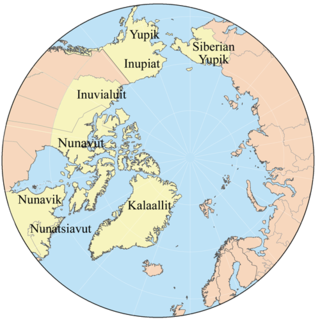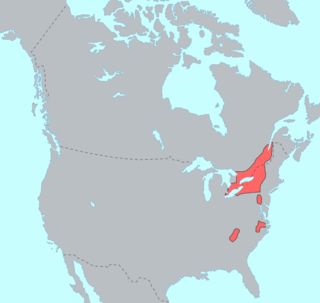| Language | Comments | Speakers | Source |
|---|
| Achumawi language | | 10 nonfluent speakers (1997 Nevin) 1,000 (1997 Bruce Nevin). | |
| Alutiiq language | | 30 speakers (2009) 1,000 . | |
| Ahtena language | | 80 (1995 M Krauss) 500 (1995 M Krauss). | |
| Kiowa Apache language | | 18 (1990 census) 1,000 (1977 SIL). | |
| Lipan Apache language | | 2 or 3 (1981 R W Young) 100 (1977 SIL). | |
| Arikara language | | 20 (1997 Parks) 3,000. | |
| Atsugewi language | | 3 (1994 L Hinton) 200 (1977 SIL)1,350 with Achumawi (2000 A Yamamoto). | |
| Caddo language | | 25 (1997 Chafe) 3,371 (1997 W Chafe). | |
| Cahuilla language | | 7 to 20 (1994 L Hinton) 35 (1990 census). | |
| Chetco language | | 5 (1962 Chafe) 100 possibly (1977 SIL). | |
| Chinook language | | 12 speakers of Kiksht dialect (1996) 300 possibly (1977 SIL). | |
| Chinook Wawa language | | 17 in the USA (1990 census). | |
| Clallam language | | 10 (1997 Timothy Montler) Several thousands (1997 T Montler). | |
| Coeur d'Alene language | | 5 (1999 R McDonald) 800 (1977 SIL). | |
| Comanche language | | less than 130 (less than 1% of 13,000 tribal members as of 2006) | |
| Coos language | | 1 or 2 (1962 Chafe) 250 (1977 SIL). | |
| Degexit'an language | | 20 to 30 (1997 Sharon Hargus) 250 to 300 (1997 M Krauss). | |
| Gros Ventre language | | 10 (1977 SIL)Very few semispeakers in 2000 (2001 Goddard) 1,200 (1977 SIL). | |
| Northern Haida language | | 15 in the USA (1995 M Krauss) 600 in the USA (1995 M Krauss). | |
| Hän language | | 7 or 8 in Alaska (1995 M Krauss)Population total all countries: 14 300. | |
| Hawai'i Sign Language | | A few users out of about 6,000 profoundly deaf people in Hawaii (1987 Honolulu Star-Bulletin), 72,000 deaf or hard-of-hearing people in Hawaii (1998 Honolulu Advertiser). | |
| Holikachuk language | | 12 (1995 M Krauss) 200 (1995 M Krauss). | |
| Hupa language | | 8 (1998 Brook) 2,000. | |
| Kalapuya language | | 1 or 2 (1962 Chafe). | |
| Kansa language | | 19 (1990 census) 250 (1986 SIL). | |
| Karok language | | 10 (1997 William Bright) 1,900 (2000 A Yamamoto). | |
| Kashaya language | | 45 (1994 L Hinton). | |
| Kawaiisu language | | 8 to 10 (2000 L Hinton) 35 (2000 A Yamamoto). | |
| Klamath-Modoc language | | 1 (1998 N.Y Times, April 9, p A20) 2,000 (1997 Scott DeLancey). | |
| Upper Kuskokwim language | | 40 (1995 Krauss)3 households (1997) 160 (1995 Krauss). | |
| Kutenai language | | 6 in the USA (2002). | |
| Louisiana Creole language | | 9,600 (2010). | |
| Louisiana French language | | 150,000 to 200,000 (2012). | |
| Luiseño language | | 30 to 40 (2000 L Hinton) 2,000 (2000 A Yamamoto). | |
| Lushootseed language | | 60 (1990 M D Kinkade)Population evenly divided between the northern and southern dialects 2,000 (1990 M D Kinkade). | |
| Northeast Maidu language | | 1 to 2 (1994 L Hinton) 108 (1990 census). | |
| Northwest Maidu language | | 3 to 6 (1994 L Hinton) 200 (1977 SIL). | |
| Mandan language | | 6 (1992 M Krauss) 400 (1986 SIL and 1997 M Mixco). | |
| Menominee language | | 39 (3,500 ethnic) (1977 SIL). | |
| Central Sierra Miwok language | | 12 Population includes 6 Eastern Central Sierra, 6 Western Central Sierra (1994 L Hinton) Possibly 5,000 all Miwok (2000 Yamamoto). | |
| Lake Miwok language | | 1 to 2 (1994 L Hinton). | |
| Northern Sierra Miwok language | | 6 (1994 L Hinton). | |
| Plains Miwok language | | 1 (1962 H Landar in Sebeok 1977). | |
| Southern Sierra Miwok language | | 7 Southern Central Sierra Miwok (1994 L Hinton). | |
| Mono language | | Western Mono: 37 to 41 (1994 L Hinton) Population includes 10-12 North Fork, 15 Auberry, 7-8 Big Sandy, 5-6 Dunlap, no Waksachi.
Eastern Mono: 50 (1994 L Hinton)
600 (2000 A Yamamoto). | |
| Nisenan language | | 1 (1994 L Hinton). | |
| Osage language | | 5 (1991 M Krauss) 15,000 (1997 Carolyn Quintero). | |
| Panamint language | | 20 100 (1998 John E McLaughlin). | |
| Pawnee language | | 20 (1997 Parks) 2,500 (1997 Parks). | |
| Plains Sign Talk | | | |
| Central Pomo language | | 2 to 5 (1997 Mithun) 4,766 (1997 Mithun). | |
| Southeastern Pomo language | | 5 (1994 L Hinton). | |
| Southern Pomo language | | 1 (1994 L Hinton). | |
| Quapaw language | | 34 (1990 census) 2,000 (1986 SIL). | |
| Quileute language | | 10 (1977 SIL) 300 (1977 SIL). | |
| Straits Salish language | | | |
| Serrano language | | 1 (1994 Coker). | |
| Snohomish language | | 10 (1998 J Brooke) 800 (1977 SIL). | |
| Tanacross language | | 35 (1997 G Holton)Population includes 3 in the Healy Lake dialect, 32 in Mansfield-Ketchumstuck 120 (1997 G Holton). | |
| Tanaina language | | 75 (1997 M Krauss) 900 (1997 M Krauss). | |
| Lower Tanana language | | 30 (1995 M Krauss) 380 (1995 M Krauss). | |
| Tolowa language | | 4 to 5 (1994 Hinton) 1,000 (2000 Yamamoto). | |
| Tübatulabal language | | 6 900 (2000 Yamamoto). | |
| Tuscarora language | | 4 to 5 in the USA (1997 Mithun) 1,200 in the USA (1997 Mithun). | |
| Tututni language | | 10 (1962 Chafe). | |
| Wasco-Wishram language | | 69 (1990 census)7 monolinguals 750 possibly (1977 SIL). | |
| Washo language | | 10 (1998 J Brooke) 1,500 (2000 A Yamamoto). | |
| Wichita language | | 3 (2000 Brian Levy) 1,400 (2000 David S Rood). | |
| Wintu language | | 5 or 6 (1997 Shepherd) 2,244 (1997 Shepherd) | |
| Yokutsan languages | | 78 speakers of Northern Foothill Yokuts (1990 census) 2,500 (2000 A Yamamoto). | |
| Yuchi language | | 10 to 12 (1997 Mary Linn) 1,500 (1977 SIL). | |
| Yurok language | | 12 (2002 Goddard) 3,000 to 4,500 possibly (1982 SIL). | |
|










